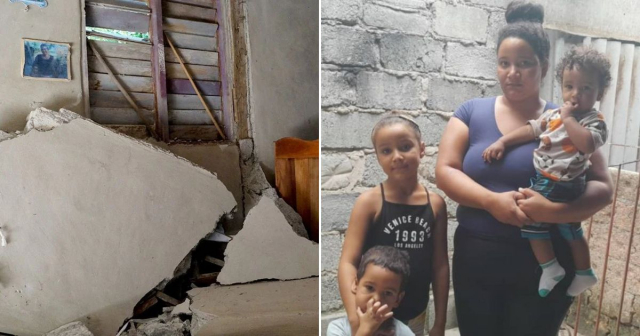More than a week after the powerful earthquakes that struck eastern Cuba, the residents of Pilón in Granma are facing a difficult reality: they continue to live in tents while dealing with uncertainty, fear, and a lack of basic resources.
This Tuesday, a new earthquake measuring 4.2 struck the area again, intensifying the crisis affecting thousands of people.
In statements shared on social media, a resident described the situation: "It’s raining, and we ask Providence to refrain from soaking Pilón, with so many people taking shelter in tents, without the comforts or safety they would have in their homes under normal circumstances."

The structural damage in Pilón is evident. The hardest hit communities, such as Nuevo Pilón, experienced severe cracking in their buildings.
A resident recounted: “It has been 78 hours since at least two strong earthquakes occurred, along with hundreds of noticeable aftershocks. Many people feel panic about going back to their apartments because the cracked walls, ceilings, and columns do not provide security. While some go up to cook or fulfill basic needs, most avoid staying in their homes.”
Despite the adversities, the solidarity among the residents of Pilón is palpable. Some have set up makeshift kitchens with fire pits filled with wood and pots ready to feed those in greatest need.
Medical Sciences students from various municipalities have joined humanitarian efforts. "They arrived on Monday and have no set return date. They sleep in tents, conduct active screenings, take blood pressure, and provide psychosocial support. It is moving to see such determination at such a young age," noted a witness.
Among the damaged buildings are essential educational centers, including a preschool, a semi-boarding school, and a secondary school.
Local authorities have evacuated school furniture and relocated students to homes that will now serve as temporary classrooms.
"The school year will be much more unconventional. This requires adaptation from students, educators, and families," explained a local source.
In Manta, a fishing neighborhood, the consequences of the earthquake have left deep scars.
"There are total collapses. Several families are sharing tents in the neighborhood yards, but comforts are scarce. Neighbors receive help hesitantly, many have gone days without a warm meal," said a witness. The emotional and physical pain persists in every account.
The psychological impact of earthquakes adds to the uncertainty of the future. Many residents are considering the possibility of leaving the municipality, which faces significant challenges in its recovery.
"The Manuel Sánchez polyclinic is cordoned off, there aren't many places available that could be turned into shelters, and the rainy season has not yet ended. 'How long will it take for the specialists' assessments and the new projects to be done? Will there be money to carry them out?' an elderly woman asks, reflecting the feelings of the entire community."
With thousands of homes damaged and ongoing seismic activity, the residents of Pilón are facing one of the most challenging crises in recent years.
Filed under:






